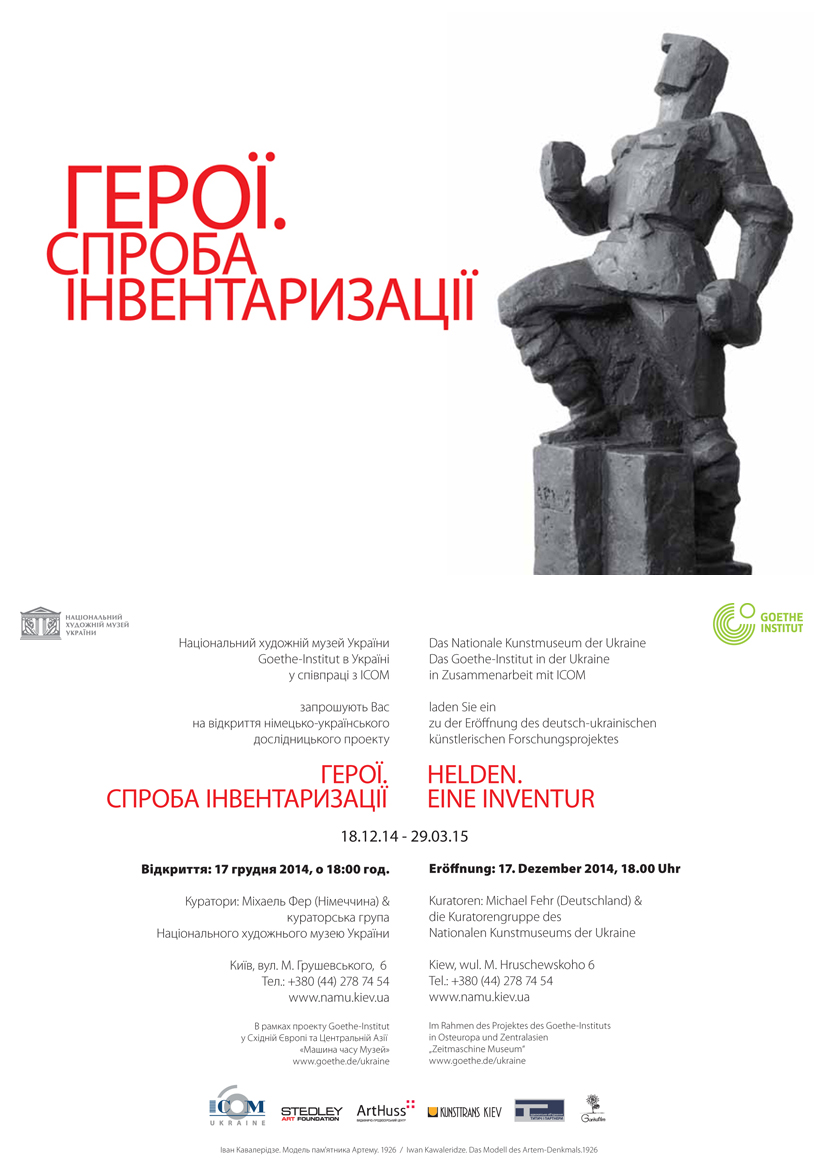
Heroes - An Inventory.
National Art Museum of the Ukraine, December 18, 2014—March 29, 2015
Concept:
A joint research project by Ukrainian and German curators on the collections of the National Art Museum of Ukraine, conducted within the framework of the “Time Machine Museum” project of the Goethe-Institut in Eastern Europe and Central Asia
Heroes—An Inventory will show around 180 works from various epochs in the collection of the National Art Museum of Ukraine illustrating heroes, saints, martyrs, and heroic deeds. The exhibition does not, however, seek to question or define which personages can justifiably claim the title of “hero” and which deeds might be called “heroic”. Instead, the works are displayed in the spirit of their traditional interpretation, with the aim of providing historical context for the current debate, which is particularly lively in Ukraine, about the notion of heroism and heroes as such.
The exhibition concept was developed between December 2013 and May 2014, while political events temporarily halted the preparations when the museum, which is located close to the Maidan, had to be shut for several months.
The exhibition emerged from an inventory taken of the museum’s entire holdings (excepting works on paper), some of which date from the early Middle Ages. In the course of this inventory, the museum’s research team identified nearly 650 paintings and sculptures that can be associated with the topoi of “hero”, “saint”, “martyr”, or “heroic deeds”. A series of in-depth discussions led to 180 works being selected for display in the exhibition.
Selection criteria included iconographic legibility, artistic merit, and physical condition. At the same time, the selection had to reflect the character and scale of the museum’s various collections while also taking into account the museum’s spatial and technical infrastructure.
The messages, political or otherwise, of the individual works did not influence the selection process. Instead, all works were included which at the time of their creation were seen or used as depictions of heroes or heroic deeds and by this token found their way into the museum’s collections. An exhibition based entirely on the museum’s own holdings, Heroes also reflects a specific aspect of the museum’s history and development since its founding in around the time of change of the 19th to the 20th century. For the museum directors, therefore, this exhibition is much more than a form of self-reflection; it is an experiment whose results will have a significant impact on the reorganization, scheduled for 2015, of the permanent exhibition.Organized by:
The National Art Museum of Ukraine, www.namu.kiev.ua
The Goethe-Institut in Ukraine, www.goethe.de/ukraine
in collaboration with ICOM
Curated by:
Michael Fehr (D) and the team of curators of the National Art Museum of Ukraine:
Yuliya Lytvynets, Lesia Tolstova, Oksana Barshinova, Halyna Bielikova
Project working Group:
Maria Zadorozhna, General Director
Educational Department:
Maryna Skyrda, Deputy Director in Education
Svitlana Tsurkan, Anna Nebeska, Natalia Shostak, Oksana Ageieva, Lidia Apollonova
Exhibition Department:
Yuliya Vaganova, Deputy Director in Exhibitions
Serhii Selezniov, Lyudmyla Nazarko, Iryna Vozianova, Oleksandr Burlaka
Art-researchers (art-historians):
Hanna Vivchar, Lyudmyla Kovalska, Tetiana Zhmurko, Olga Burlaka, Yulia Zynoviiva, Danylo Nikitin, Yulia Zakharchuk, Olga Zhbankova, Kateryna Mamaeva,
Restorers:
Natalia Chamlai, Iryna Demydchuk-Demchuk, Maksym Omelchenko,
PR and Communication:
Olena Goncharuk, Kateryna Busol, Mykola Goncharov, Oleksandr Gruschenko
Infrastructure and Technical Support:
Roman Klimov, Deputy Director for Infrastructure and Technical Support
Oleksandr Karmazin, Anatolij Piljavski
_________________________________________________________________________________________________________________
A Walk through the exhibition
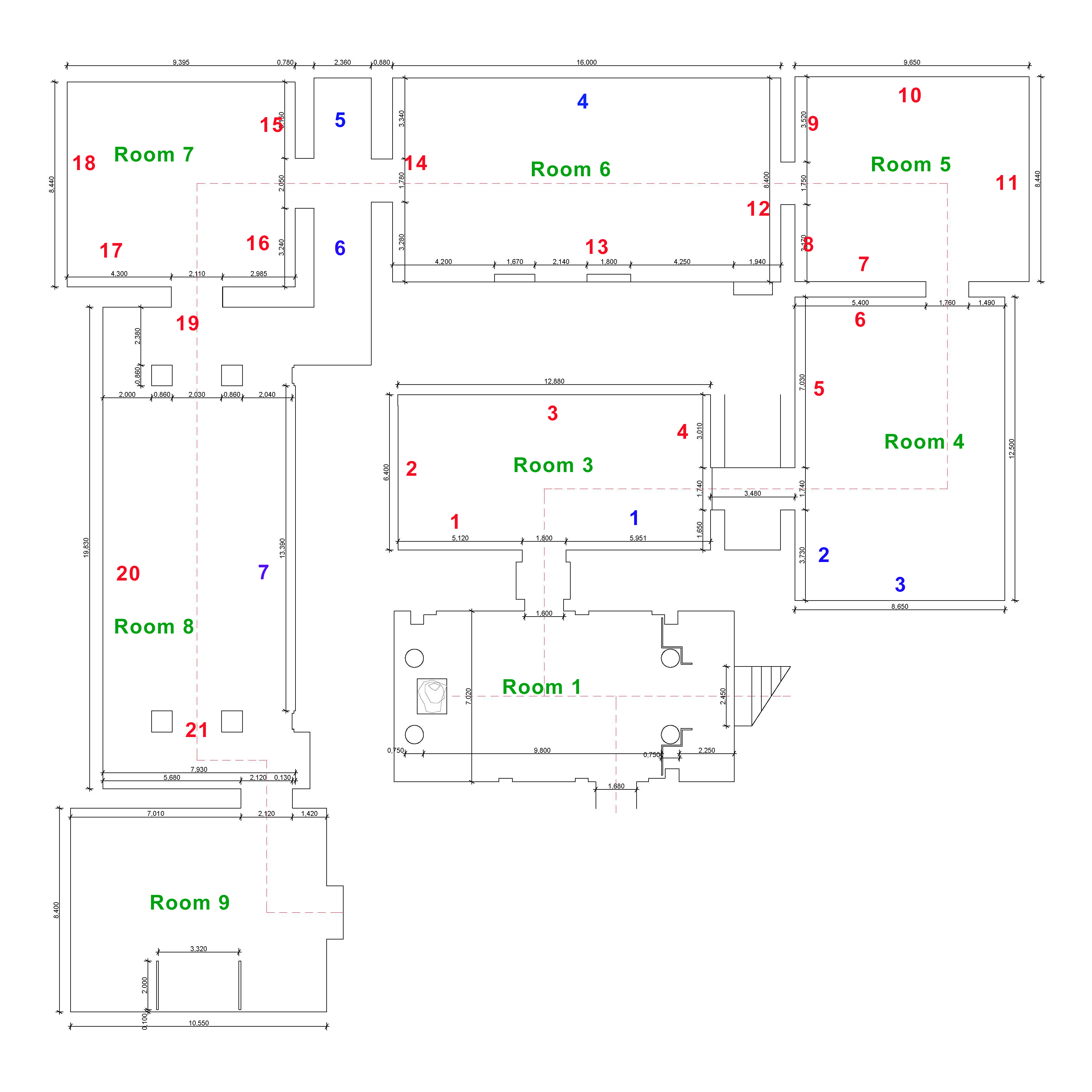
Room 1
In Lieu of Introduction
In Heroes. An Inventory in Progress we exhibit works from various epochs in the collection of the National Art Museum of Ukraine depicting heroes, saints, martyrs and heroic deeds. The only period missed in the exposition is last decades, simply, because the museum does not hold relevant works of this times. The exhibition does not seek to question or define which personages can justifiably claim the title of "hero" and which deeds might be called "heroic". The works are displayed in the spirit of their traditional interpretation, with the aim of providing historical context for the current debate.
Heroes. An Inventory in Progress emerged from an inventory taken of the museum’s entire holdings (excepting works on paper), followed by a series of in-depth discussions which led to 180 works being selected for display in the exhibition. Selection criteria included iconographic legibility, artistic merit, and physical condition. At the same time, the selection had to reflect the character and scale of the museum’s various collections.
An exhibition based entirely on the museum’s own holdings, Heroes – An Inventory also reflects a specific aspect of the museum’s history and development since its founding at end of the 19th century. For us, therefore, this exhibition is much more than a form of self-reflection; it is an experiment which results will have a significant impact on the reorganization of the permanent exhibition and also push community to reflection.
The exhibition is arranged in four main blocks based on chronological and thematic criteria, framed by a prelude, an intermezzo, an open space, and it also includes works on display within the permanent exhibition on the second floor.
The prelude starts in this room here: it showcases the, for the time being, non-removable statue of Lenin, which was hidden behind a wall for the past twenty years, and puts it up for discussion by contextualizing it with two paintings depicting two other controversial historical figures, Stalin and Khmelnytsky.
Please note the extensive information provided as a passport (inventory-card) to each work on display / /cklick into the images (under construction).
The curatorial team
Замість вступу
Виставка виникла у результаті інвентаризації всіх фондів музею (крім робіт на папері, поодинокі з яких були додані пізніше як контекстуально важливі). В ході цієї інвентаризації науковий колектив музею визначив близько 650 картин і скульптур, що якимось чином могли би бути пов’язані із топосами «герой», «святий», «мученик» або «подвиги». В результаті інтенсивного процесу обговорення із цього фонду були нарешті відібрані 180 робіт для виставки. Критеріями відбору були питання щодо можливості однозначного іконографічного упорядкування, художньої цінності та технічного стану творів. Крім того, вибір мав відображати характер і обсяг різних груп зібрання, а також мали враховуватися умови приміщень музею.
При відборі жодної ролі не відігравав політичний посил окремих робіт: скоріше, враховувалися всі твори, що на момент їхнього виникнення розумілися як зображення героїв або подвигів або відповідно використовувалися у цій якості, а також саме як такі увійшли до колекції музею. Тобто, у відборі творів головним було не визначити, що таке герой або хто може вважатися героєм, а показати в усіх випадках ці твори відповідно до традиційної атрибуції.
Тому виставка відображає, принаймні, у цьому аспекті, також і історію, і політику формування колекцій самого музею з моменту його заснування у 1899 році. Вона не представляє останні події, тому що у фондах музею немає відповідних робіт.
Хронологічно та тематично виставка поділена на чотири блоки: у прелюдії (парадні сходи) ми створюємо контекст між трьома частково досить спірними історичними постатями, чиї зображення, однак, внаслідок технічних умов мають більш-менш постійне місце у цьому музеї.
У першому блоці Ви бачите зображення фіктивних і реальних героїв періоду соціалізму, у другому - героїв воєн минулого століття. Третій блок присвячений зображенню козаків, і в якості інтермецо йдеться про міфічних героїв. У четвертому й останньому блоці ми показуємо образи святих і мучеників, які певною мірою служили взірцями для зображень героїв.
Зверніть увагу, будь ласка, на докладну інформацію про окремі роботи, яка наведена в інвентарних книгах до кожного залу виставки.
Колектив кураторів
Prelude
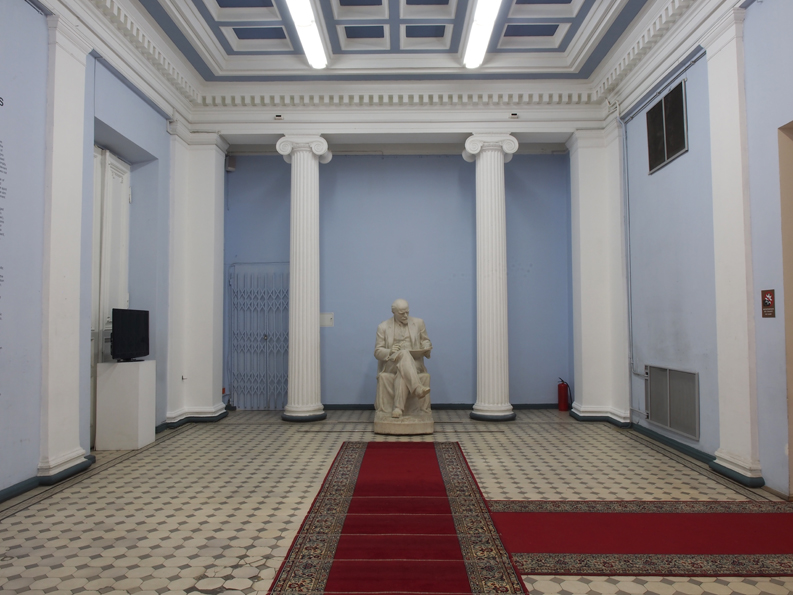
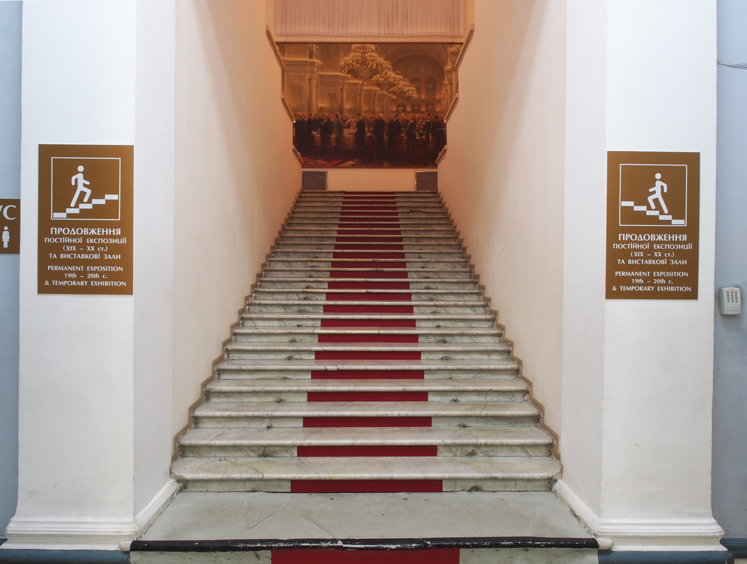
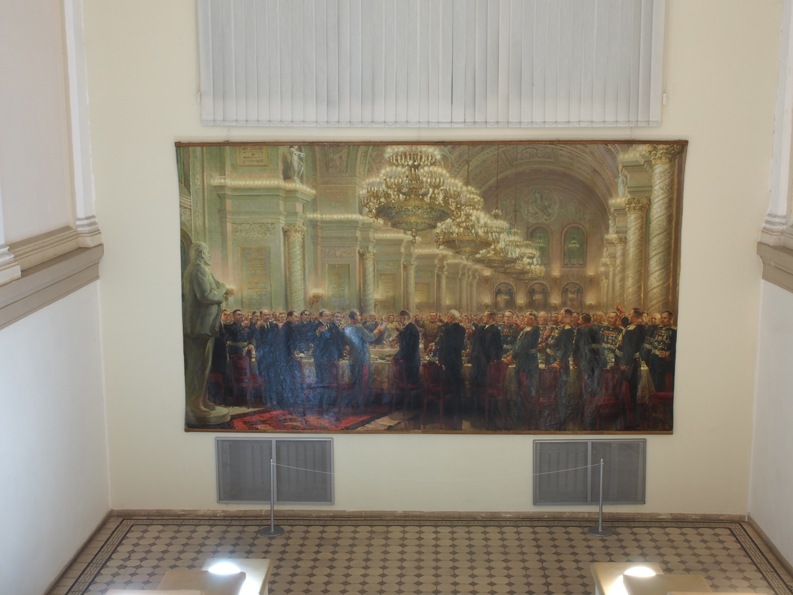
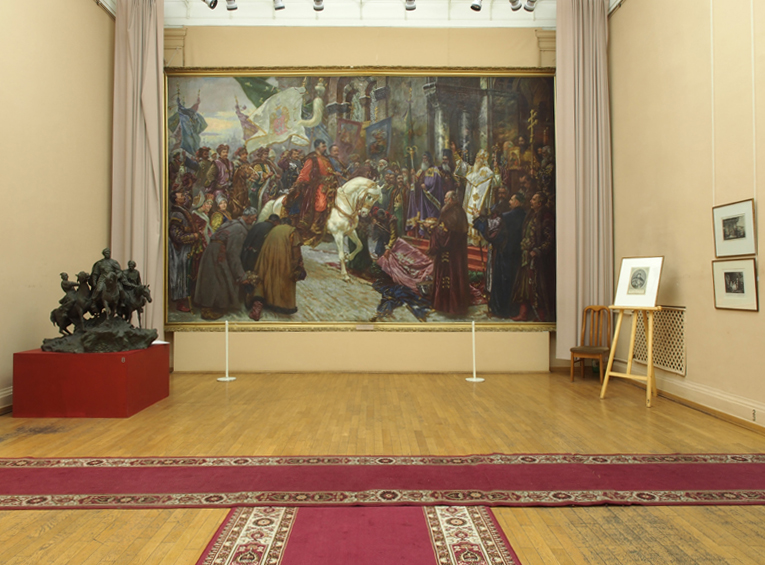
The Exhibition - Room 3 to 8
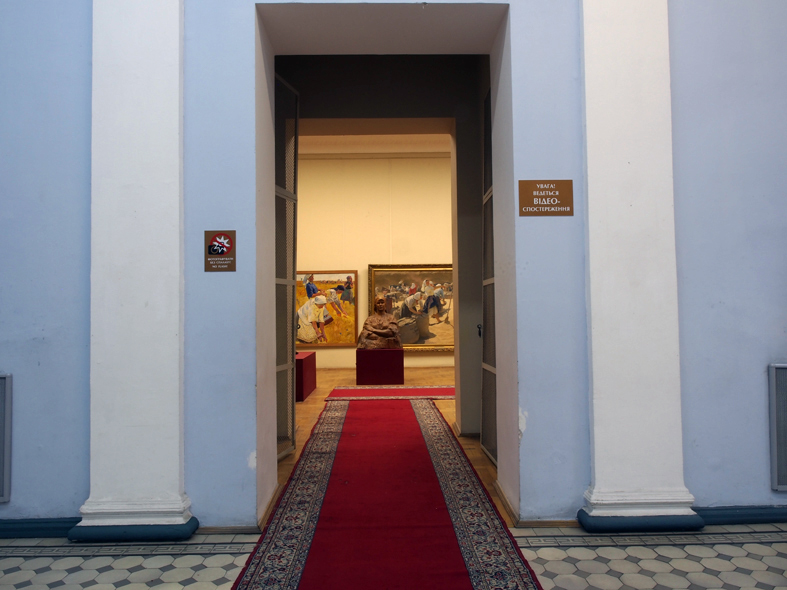
Heroes in the making
Heroes and heroism have always been a social phenomenon: a hero needs resonant social context, persons benefiting from his or her deed, people who are capable of recognizing and assessing the fact that such hero has overcome him- or herself and done more for the others than for him- or herself.
That is why heroism is always a construct. It often has a certain attribute of a hero and / or a certain real story at its core. However, such characteristics become special only when observed by third persons and as a result of stories told by them.
Thus, every community has its own heroes. And what is considered a heroic deed varies a lot in different periods of time. In fact, there are very few persons regarded as heroes by big social groups throughout the centuries.
Usually, heroism is connected with the idea of an exceptional deed, a deed, which does not fit into a common course of events or simply overcomes it: the courageous and successful struggle of a person against monsters and tyrants that embody oppression, threats and exploitation. In this case, a hero also bears something dangerous, uncontrolled and superhuman. Such characteristics may be interpreted as a threat even by those protected by such hero.
Героїв створюють
Герої та героїзм завжди були соціальним феноменом: герою потрібен громадський резонансний простір, особи, що мають користь від його вчинку, люди, які у змозі визнати та оцінити те, що він подолав сам себе та зробив більше для інших, ніж для себе.
Тому героїзм завжди є конструкцією. Хоча в її основі часто лежить якийсь особливий атрибут героя та / або якась реальна історія, але вони набувають особливого значення лише у результаті спостереження третіми особами та розказаних ними історій.
Таким чином, кожна спільнота має своїх героїв, а те, що сприймається як героїчний вчинок, може в різні часи суттєво відрізнятися. Насправді, існує дуже мало фігур, яких би великі соціальні групи шанували як героїв протягом століть.
Із героїзмом ми, зазвичай, пов’язуємо уявлення про незвичайний вчинок, який виходить за межі існуючого устрою або долає його: відважна й успішна боротьба індивідууму проти чудовиськ або тиранів, які символізують пригноблення, загрози та експлуатацію. У цьому сенсі герою завжди притаманне також і щось небезпечне, неконтрольоване та надлюдське, що може також сприйматися як загроза навіть тими, за кого він виступає.
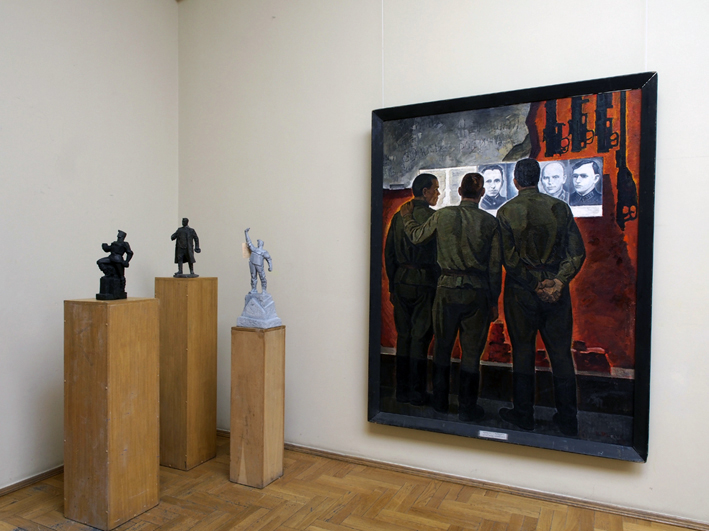
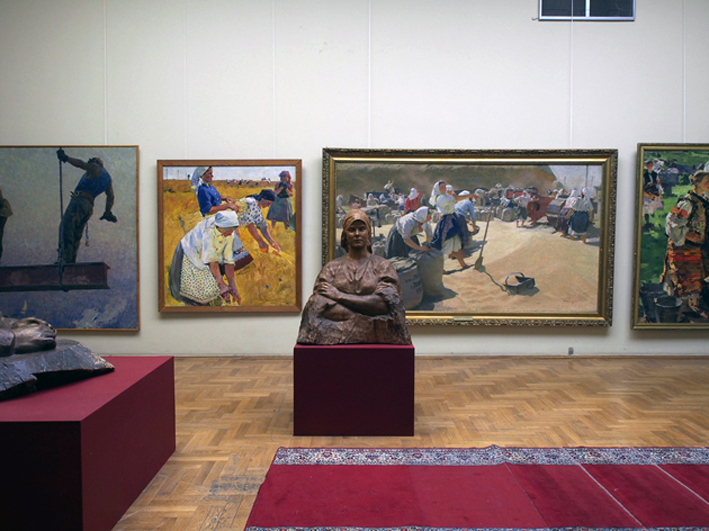
Our labor is
A matter of dignity,
A matter of valor and
A glorious deed…
Anatoliy D’Aktyl, 1940
Труд наш есть дело чести,
Есть дело доблести и подвиг славы…
Анатолій Д’Актиль, 1940
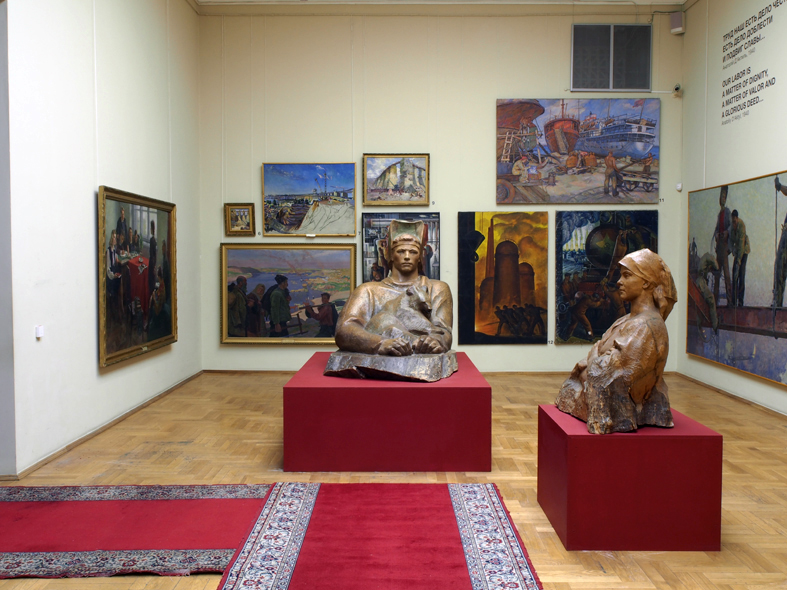
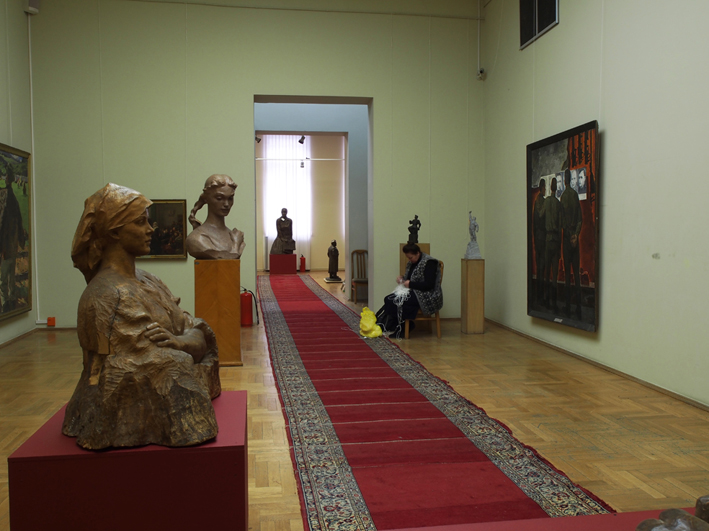
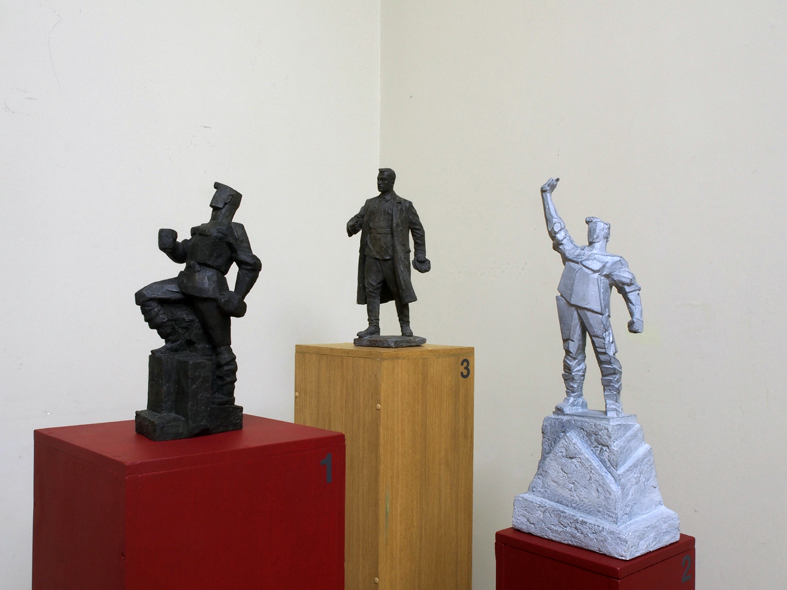
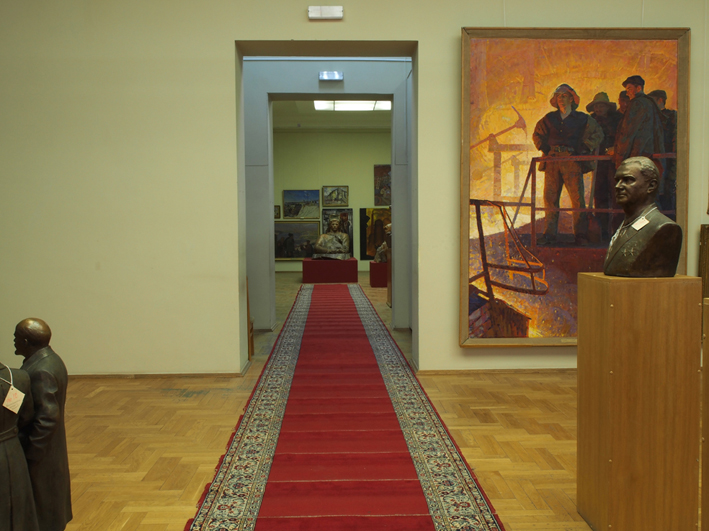
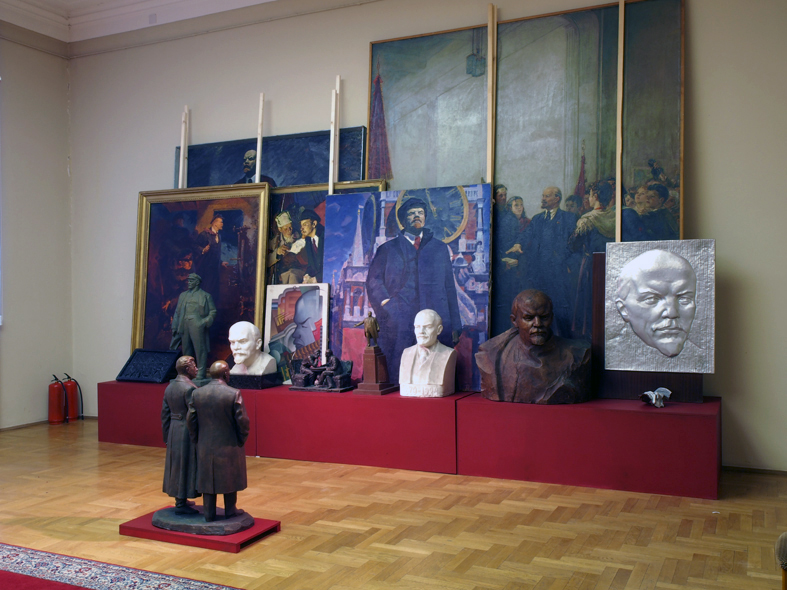
Lenin is always alive,
Lenin is always with you –
In misery, in hope
And in happiness…
Lev Oshanin, 1955
Ленин всегда живой,
Ленин всегда с тобой —
В горе, в надежде и радости…
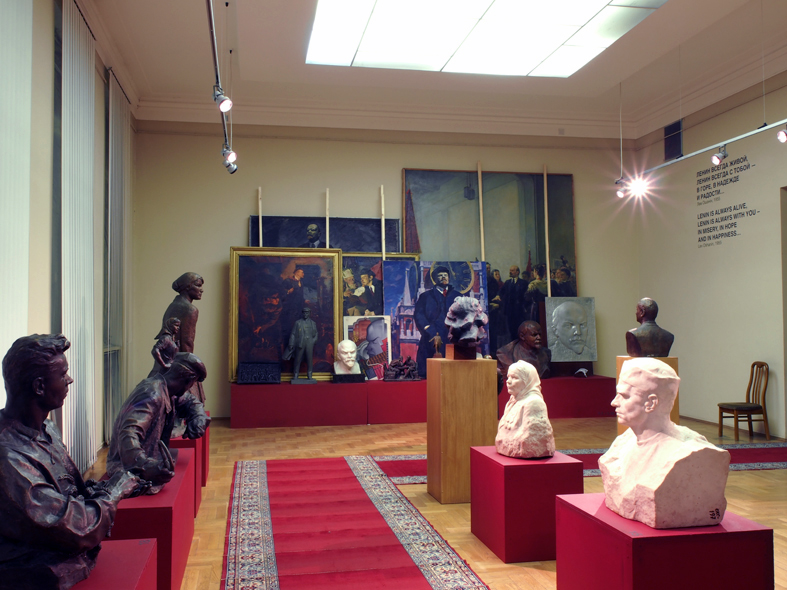
I salute you, the country of Heroes!..
Anatoliy D’Aktyl, 1940
20, 605 persons received the Honorary Title
“Hero of Socialist Labor” between 1938-1991
Здравствуй, страна героев!..
Анатолій Д’Актиль, 1940
Протягом 1938-1991 років 20 605 осіб були удостоєні звання Героя Соціалістичної праці
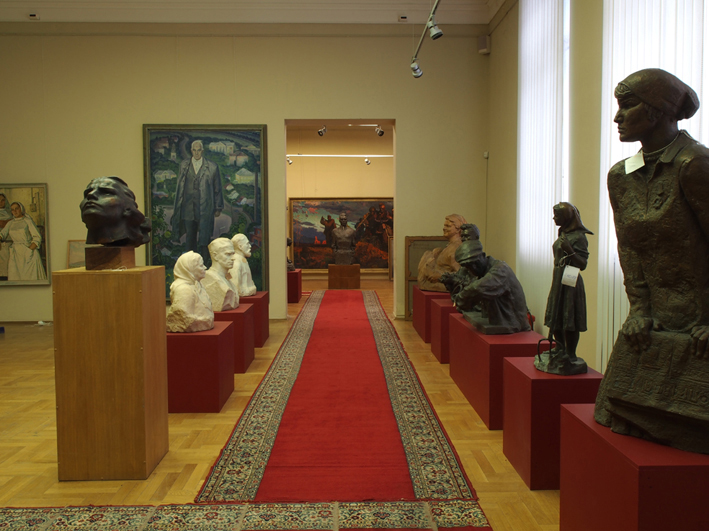
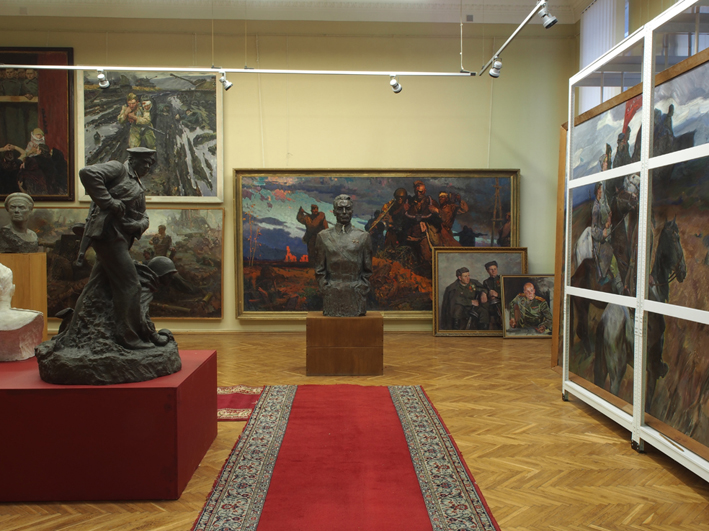
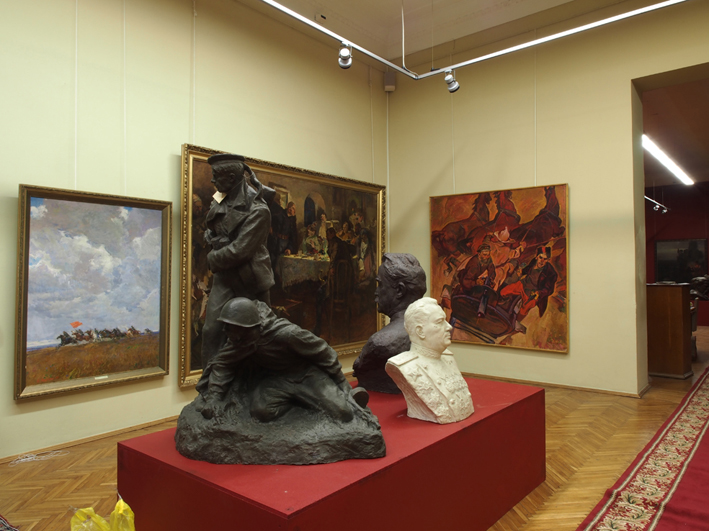
… enemies will be smashed by our army,
by our people!
Ievgeniy Dolmatovsky, 1941
…ворогів змете Наша армія, наш народ!
Євгеній Долматовський, 1941
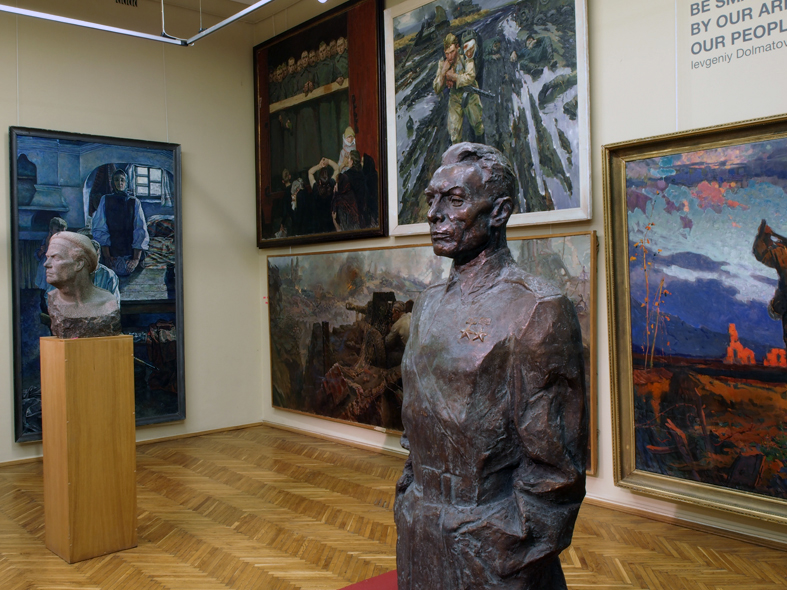
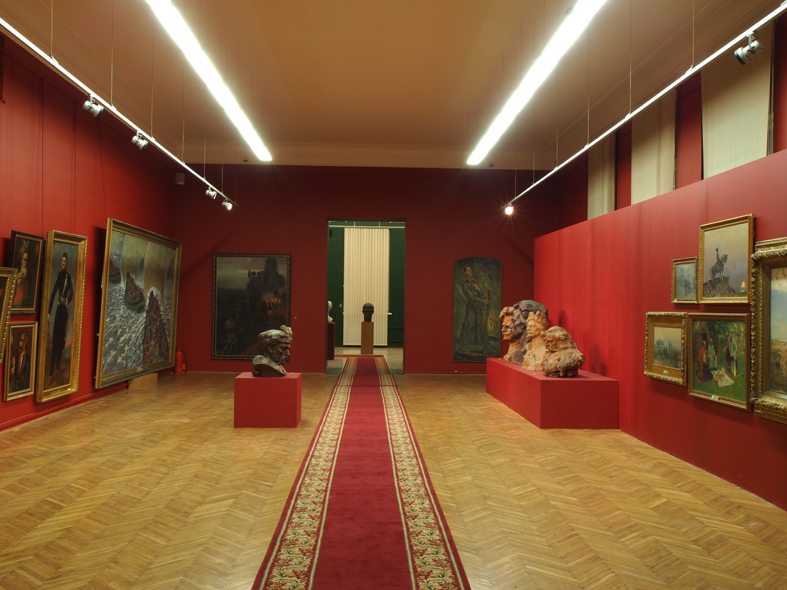
The Cossack glory will never die, it will never perish!
Слава козацька не вмре, не поляже!
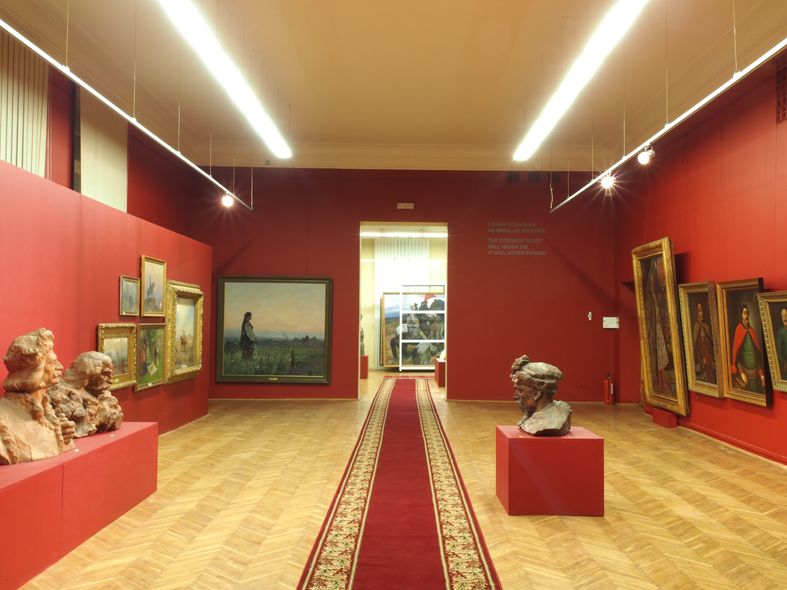
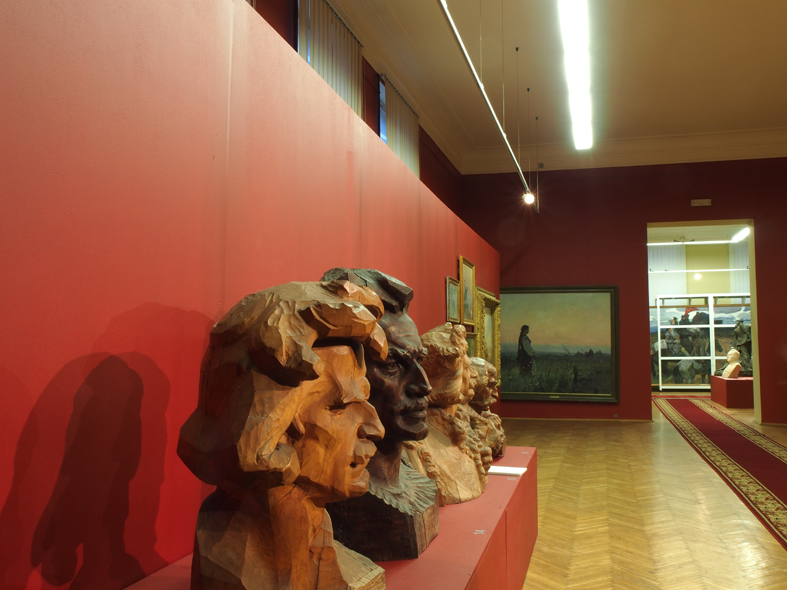
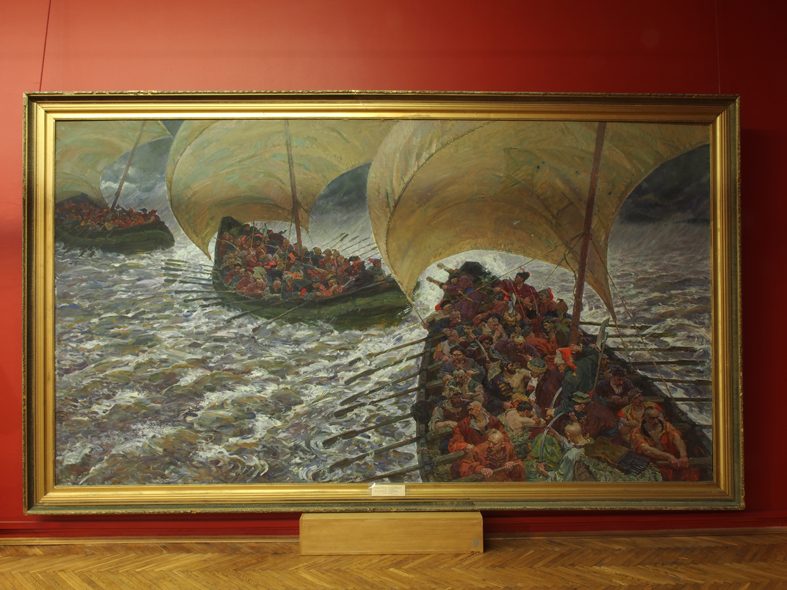
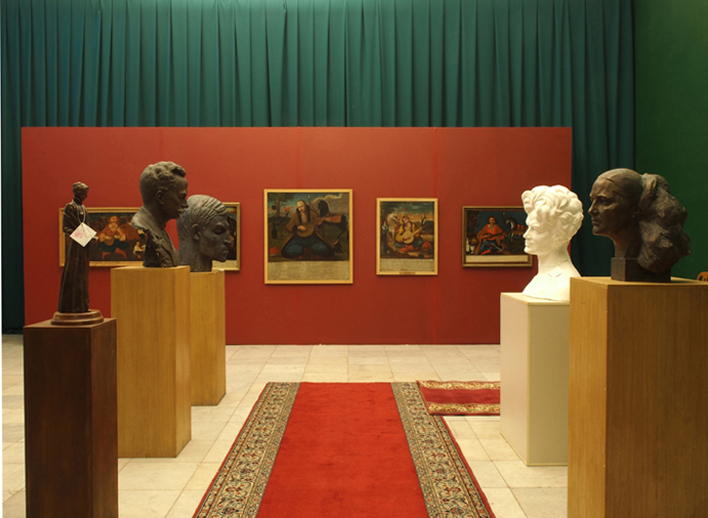
Free as the wind…
…the endless steppe is my kin,
A sabre and a pipe are my only family,
A grey horse is my brother
Folk song
Вільний як вітер…
… степ широкий – то ж мій сват,
Шабля, люлька – вся родина,
Сивий коник – то ж мій брат
Народня пісня
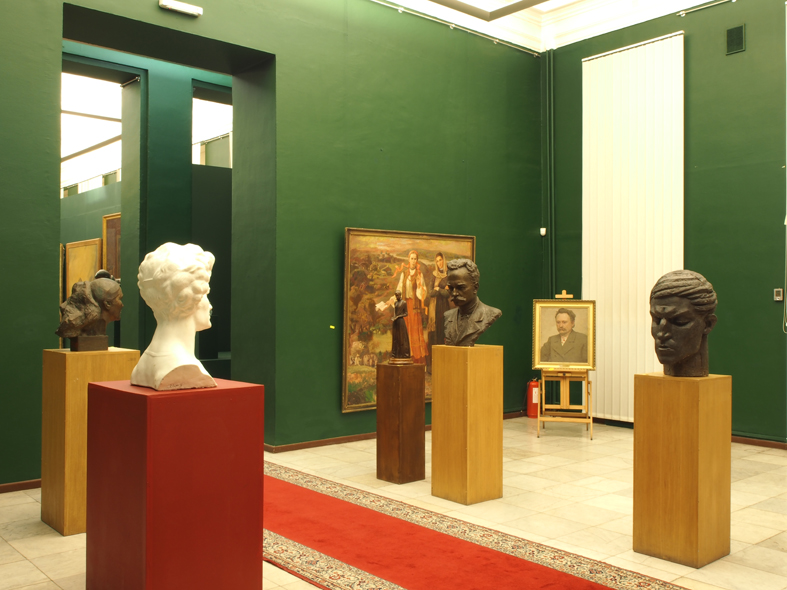
Taras Shevchenko
Saints and martyrs
Святі і мученики
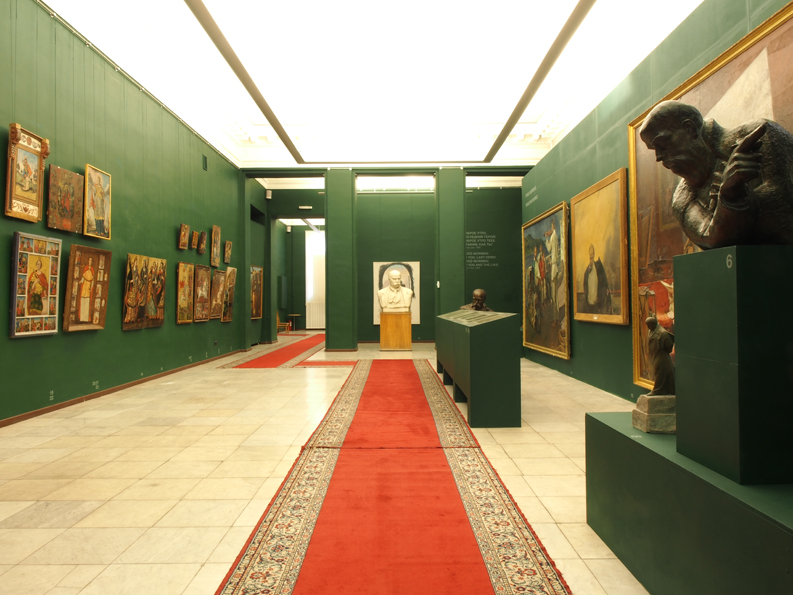
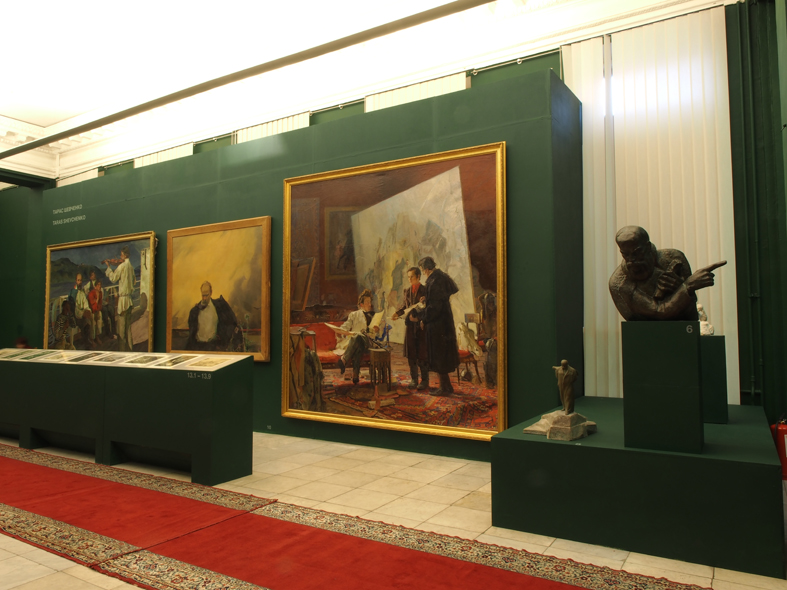
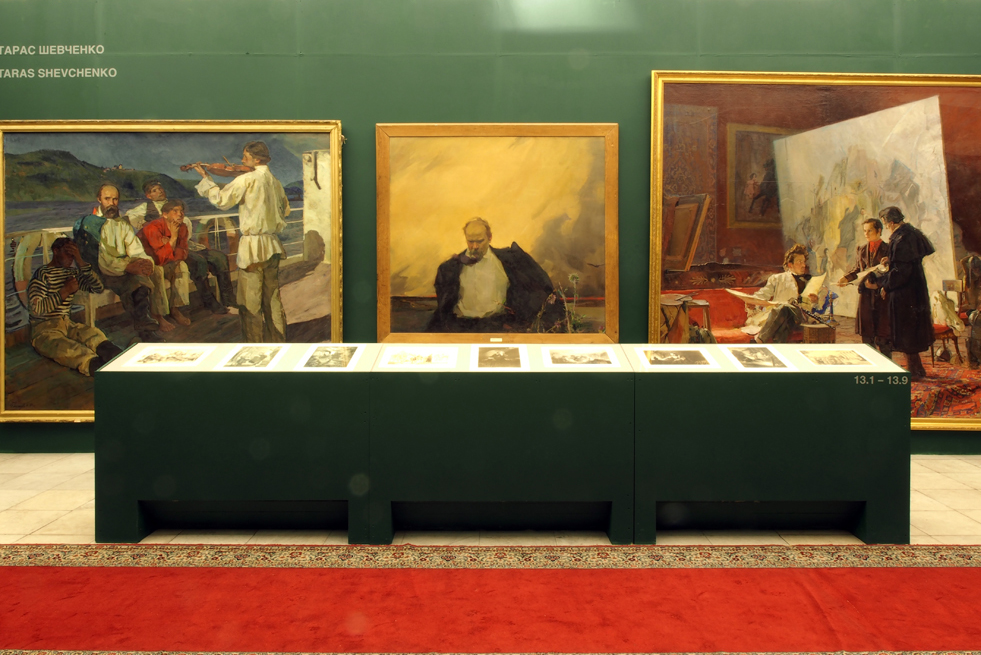
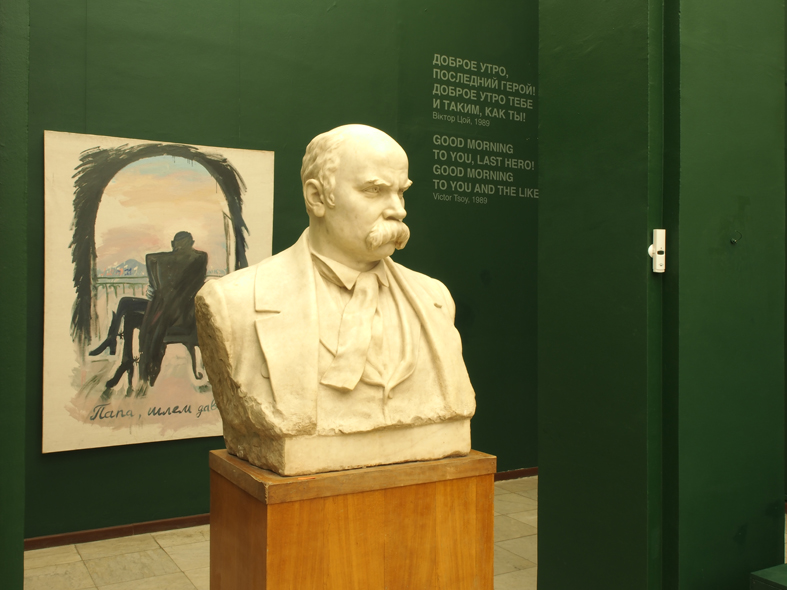
Good morning
To you, last hero!
Good morning
To you and the like!
Victor Tsoy, 1989
Доброе утро тебе и таким, как ты...
Віктор Цой, 1989
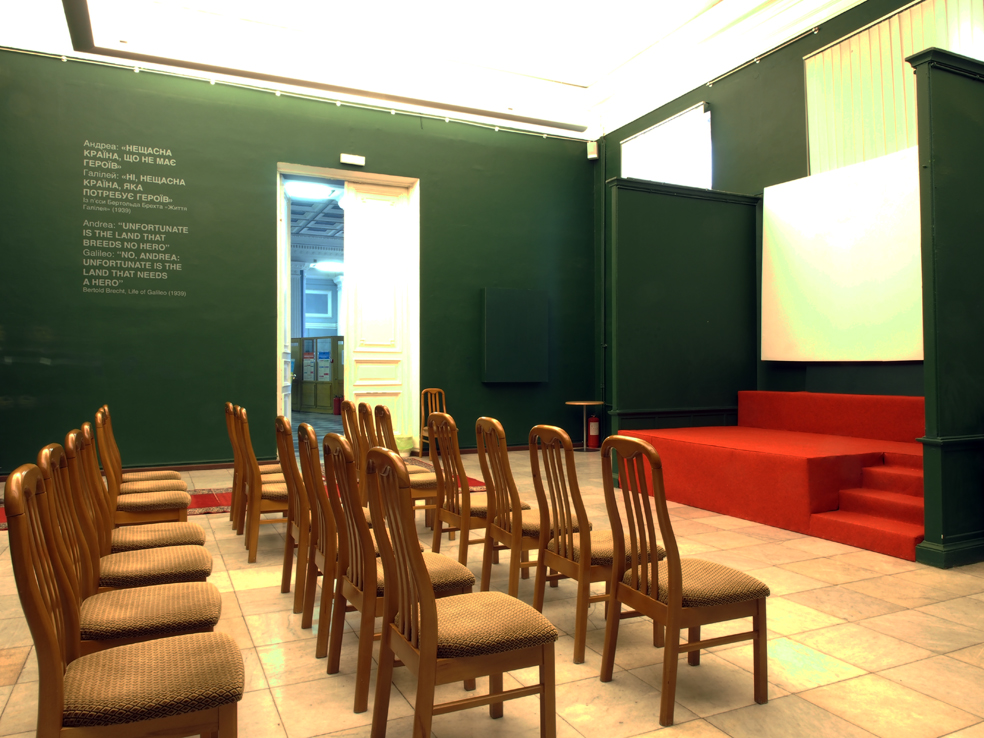
Andrea: “Unfortunate is the land that breeds no hero”
Galileo: “No, Andrea: unfortunate is the land that needs a hero”
Bertold Brecht, Life of Galileo (1939)
Андрея: «Нещасна країна, що не має героїв»
Галілей: «Ні, нещасна країна, яка потребує героїв»
Із п’єси Бертольда Брехта «Життя Галілея» (1939)